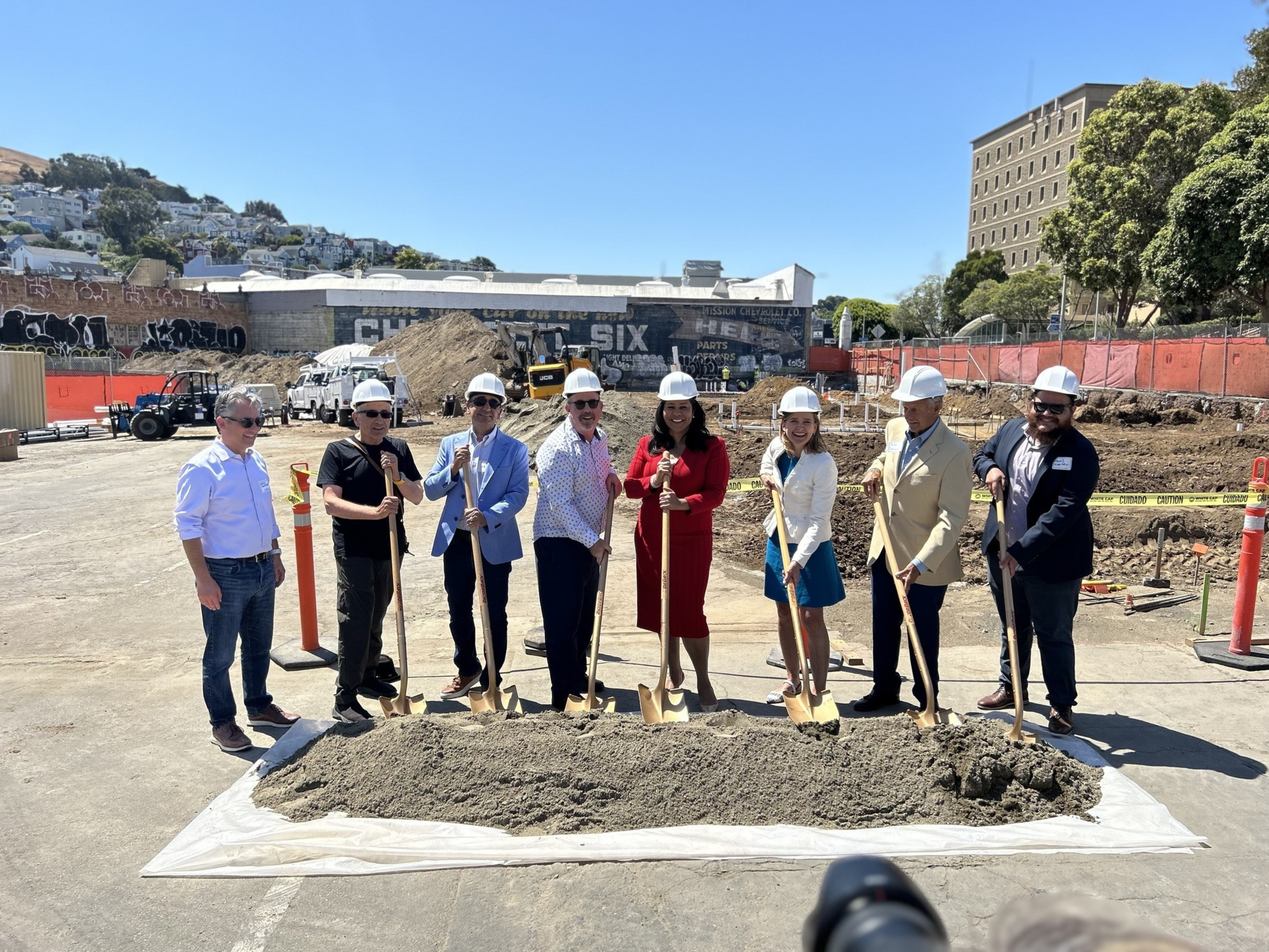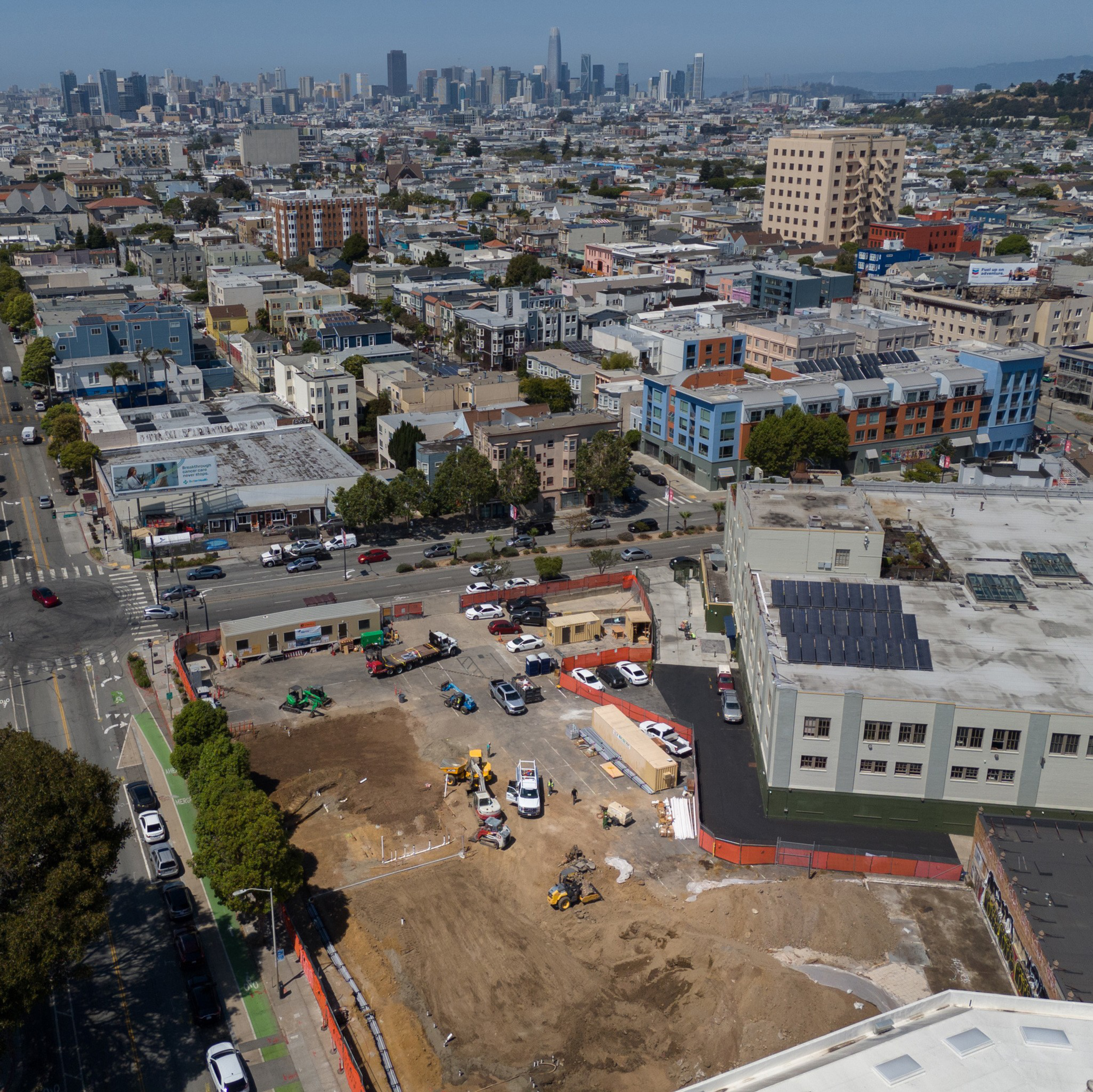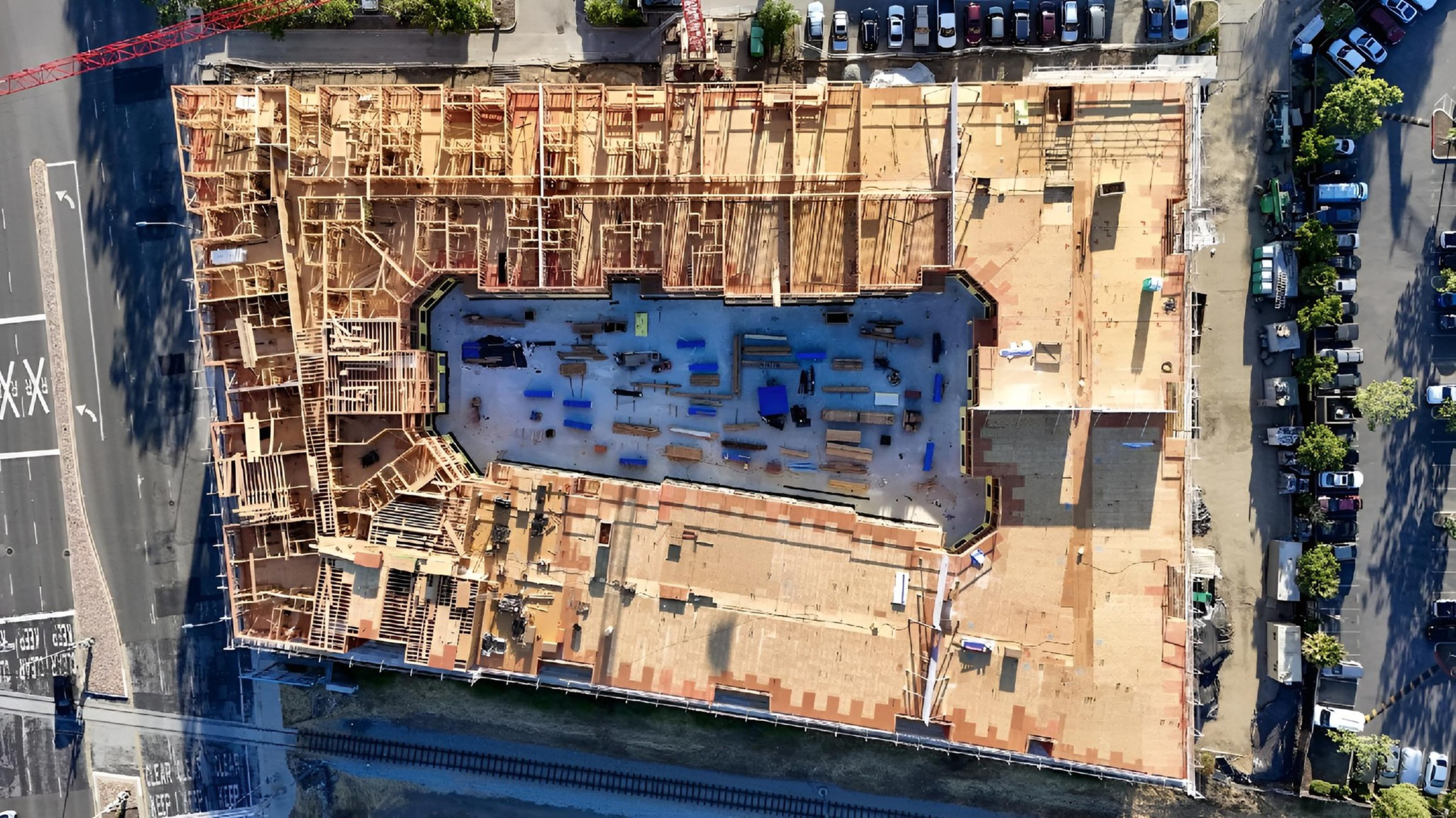Time kills all deals, so the saying goes. As a process drags on, doubt, uncertainty and expenses tend to multiply. That has been a recurrent lesson in San Francisco, where affordable homes have become too expensive and cumbersome to build, despite overwhelming need.
But one local group thinks it has unlocked an approach that could reverse that trend. The Bay Area Housing Innovation Fund is set up to complete projects up to twice as fast and at half the cost of similar developments.
On Tuesday, the group broke ground on a five-floor, 145-unit apartment building for low-income seniors at the corner of Valencia and Cesar Chavez streets in the Mission. The building, dubbed 1633 Valencia, will have a community room, two offices for property management, a supportive services suite and bike parking.
Should construction go according to plan, the project could start welcoming residents in less than two years and cost approximately $520,000 per unit to build. In contrast, another new affordable housing development, the 35-unit project replacing a fire-gutted building at 3300 Mission St., will cost nearly $1 million per unit, according to a loan application filed with the city.

Rebecca Foster, founding CEO of the Housing Accelerator Fund, said the key is reversing the typical order of operations in which affordable housing comes together.
Traditionally, developers first solicit public money for financing, triggering a mountain of applications and approvals that often delay construction for years and add to the cost of each unit. Instead of taking that route, the Housing Accelerator Fund is bringing in private investment upfront.
At 1633 Valencia, a newly formed $50 million fund — fueled by the likes of Apple and local real estate billionaire John A. Sobrato — provided a initial $16 million loan, critical to get the project off the ground.
“We’re giving all the stakeholders clear financial certainty so that they can commit to the project,” Foster told The Standard at the groundbreaking ceremony.
But that doesn’t mean the group is circumventing the government. A combination of low-income housing tax credits, tax-exempt bonds and bank loans will round out the financing needed for the project.
“It’s really hard for the government to move at the speed of the market,” Foster said. “This is a great example of using flexible private capital to take more of the risk upfront, and pairing it with the government and tax base necessary to ensure [the project’s] sustainability in the long run.”
Lawmakers also played a role. Without state Sen. Scott Wiener’s SB 35 and SB 423 — legislation that streamlined permitting for affordable housing — 1633 Valencia and similar projects likely wouldn’t have been possible because of onerous hearings and environmental reviews, Foster said.
Separately, the San Francisco Department of Homelessness and Supportive Housing was able to select affordable housing developer Mercy Housing California without competitive bidding because of a clause in the city’s administrative code that allows it to bypass the process if services are tied to addressing homelessness.
When 1633 Valencia is ready to be leased, the city will work with the community group Mission Action to prioritize unhoused residents from the neighborhood.

Senior housing developer Sequoia Living purchased the vacant 1-acre lot for $13.5 million in 2022, paying all cash at a time when real estate financing had begun to freeze. The nonprofit is allowing Mercy Housing California to develop a portion of the site while it pursues a separate 126-unit senior housing development alongside 1633 Valencia, which will break ground in 2026.
The housing accelerator’s model for 1633 Valencia is based on the Tahanan, a 145-unit building for the chronically homeless at 833 Bryant St. in SoMa. Construction of the Tahanan was similarly kick-started by a private donation (opens in new tab) and was developed by Mercy Housing in partnership with the Housing Accelerator Fund and Tipping Point Community, a nonprofit founded by mayoral candidate Daniel Lurie.
Even though it was hailed by housing activists as a win, the Tahanan — built in 2022 at a cost of $385,000 per unit — received pushback from local trade unions (opens in new tab) for its use of modular construction, which involved building large portions off-site, at a factory in Vallejo, prior to delivery to San Francisco for final assembly.
For that reason, Foster said, the developers of 1633 Valencia opted not to pursue modular construction. Instead, they will enable cost savings through “construction efficiencies” by having architects, contractors and subcontractors collaborate from the start, aligning all stakeholders on price and budget. The building’s simple floor plans will be modeled after the ones in the Tahanan, which should make the project faster to build, Foster added.

“It is encouraging that the same team [from the Tahanan] is now breaking ground and will be bringing many of the same cost-saving techniques to bear,” said Matt Schwartz, president and CEO of California Housing Partnership, a nonprofit dedicated to helping government and nonprofit housing agencies. “We are optimistic that even though costs have continued to rise in the past two years, this talented team will achieve similarly impressive results.”
Sobrato, who was a Silicon Valley real estate magnate before becoming a local giant in philanthropy (opens in new tab), said he was impressed by the development of the Tahanan and wanted to bring more projects like it to the Bay Area.
His relationship with Apple goes back decades, to when he developed the company’s first corporate campus and used his connections to bring its considerable cash to the Accelerator Fund. Sobrato, 85, was a critical voice in planning and design discussions for 1633 Valencia.
“He’s dogged about adhering to cost and time while maintaining the dignity of good living spaces,” Foster said. “But one thing he kept repeating was, ‘Guys, this has to get done before the end of my lifetime.’”
